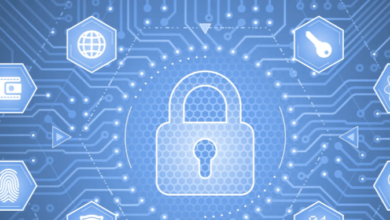Sustainability Through Tech: How Green IT is Changing Business

In recent years, the intersection of technology and sustainability has emerged as a critical focal point for businesses across industries. As concerns over climate change, resource depletion, and environmental degradation continue to rise, companies are increasingly turning to “Green IT” or sustainable IT practices as a solution. Green IT refers to the use of information technology in ways that minimize environmental impact, reduce energy consumption, and promote eco-friendly practices throughout the entire lifecycle of tech products—from production to disposal.
The shift towards Green IT represents not just an environmental imperative but also a business strategy that offers a competitive edge, cost savings, and long-term sustainability. Green IT practices are transforming business models, making them more efficient and responsive to both environmental challenges and consumer demand for more sustainable practices.
Understanding Green IT: What It Means
At its core, Green IT focuses on the sustainable use of technology. This encompasses a range of practices, from improving the energy efficiency of data centers and reducing electronic waste to using renewable energy sources and promoting recycling initiatives. Green IT can be applied across all levels of a business, including infrastructure, operations, product design, and supply chains.
One of the most important goals of Green IT is to reduce the carbon footprint of companies by adopting energy-efficient hardware, software, and systems. This may involve consolidating data centers, optimizing server utilization, or using cloud computing solutions that minimize the need for physical servers. Additionally, companies are increasingly opting for eco-friendly designs in hardware, which are built to consume less power, last longer, and be easily recycled.
By adopting these practices, businesses not only lower their environmental impact but also benefit from operational savings, as energy-efficient systems reduce power consumption and, consequently, electricity costs. Furthermore, businesses that align themselves with green practices can appeal to environmentally conscious consumers and employees, enhancing their brand image and attracting talent and investment.
Energy Efficiency and Data Centers
One of the key areas where Green IT has made a significant impact is in the energy management of data centers. Data centers, which house a company’s critical IT infrastructure, are notorious for their high energy consumption. They require a substantial amount of electricity to power the servers, cool the systems, and maintain operational stability. In fact, according to the International Energy Agency, data centers account for approximately 1% of global electricity demand, and this number is only expected to rise with the growth of digitalization.
Green IT addresses this challenge by focusing on the energy efficiency of these facilities. Modern data centers are increasingly designed with sustainability in mind, utilizing more efficient cooling systems, renewable energy sources, and energy monitoring tools to reduce overall consumption. For example, innovations like liquid cooling systems and air economizers help reduce the need for energy-intensive air conditioning, while advances in virtualization allow companies to consolidate workloads, meaning fewer physical servers are needed to handle the same amount of data processing.
Cloud computing has also contributed to improving the energy efficiency of IT operations. By moving infrastructure to the cloud, businesses can leverage the economies of scale offered by cloud service providers. Large providers like Amazon Web Services (AWS), Microsoft Azure, and Google Cloud have invested heavily in renewable energy and energy-efficient technologies for their data centers, helping businesses lower their carbon footprints while ensuring they can scale their digital operations.
Reducing Electronic Waste (E-Waste)
Another critical aspect of Green IT is addressing the issue of electronic waste, or e-waste. E-waste refers to discarded electronic devices and equipment, such as computers, smartphones, servers, and other gadgets. With the rapid advancement of technology and the constant upgrade cycles in the business world, e-waste has become one of the fastest-growing waste streams globally. According to the Global E-Waste Monitor, the world generated 53.6 million metric tons of e-waste in 2019, and this figure is projected to reach 74.7 million metric tons by 2030.
Green IT aims to tackle this challenge by promoting responsible disposal and recycling of electronic devices. This involves designing technology with longer lifespans, using materials that are easier to recycle, and implementing take-back programs where companies can return old devices for recycling or refurbishing. Additionally, some companies have started using refurbished or remanufactured equipment as part of their IT strategy, reducing the demand for new devices and minimizing e-waste generation.
Moreover, companies are encouraged to adopt circular economy principles in their tech procurement strategies. A circular economy model aims to extend the lifecycle of products by reusing, recycling, or repurposing components instead of disposing of them after use. This reduces the need for raw materials and lessens the environmental impact of technology manufacturing and disposal.
Software Optimization and Energy Consumption
Green IT is not limited to hardware solutions; it also encompasses the software that runs on IT systems. Software plays a vital role in determining how efficiently hardware operates, and poor software design can lead to unnecessary energy consumption. Green software engineering focuses on optimizing code to make it more efficient, ensuring that applications use less processing power and, consequently, less energy.
For example, poorly optimized code can cause servers to work harder than necessary, consuming more energy. Green IT practices advocate for energy-efficient programming techniques that minimize computational load, such as reducing data storage requirements, optimizing algorithms, and minimizing resource-hungry processes. Additionally, cloud-based applications can be optimized to scale up or down based on demand, ensuring that energy is not wasted when computational resources are not fully needed.
Software developers are also focusing on creating applications that monitor and manage energy usage within IT infrastructure. These tools allow businesses to identify inefficiencies and implement strategies to reduce consumption, leading to lower operational costs and a reduced carbon footprint.
The Role of Cloud Computing in Green IT
Cloud computing has been one of the biggest game changers in the realm of Green IT. By transitioning from traditional on-premises data centers to cloud-based solutions, businesses can significantly reduce their environmental impact. Cloud providers typically offer more energy-efficient infrastructure due to economies of scale and the ability to deploy cutting-edge, energy-saving technologies across their vast operations.
Moreover, many cloud providers have made strong commitments to sustainability, investing in renewable energy projects and setting ambitious goals to achieve carbon neutrality. For instance, Microsoft has pledged to be carbon negative by 2030, and Google Cloud has been carbon-neutral since 2007, with a goal of running all its data centers on renewable energy 24/7 by 2030.
By migrating to cloud services, companies can benefit from the green practices of these providers, dramatically lowering their own environmental footprints while also gaining access to scalable, secure, and cost-effective IT solutions.
Sustainable Supply Chains
Green IT extends beyond internal IT operations to the broader supply chain. As businesses become more aware of their environmental responsibilities, they are increasingly looking at how their suppliers and partners manage their own IT practices. A sustainable supply chain is one where every aspect, from procurement to product delivery, is evaluated for its environmental impact.
Businesses are now prioritizing suppliers that follow sustainable IT practices, such as using energy-efficient equipment, reducing waste, and adhering to responsible recycling and disposal policies. This shift encourages a broader adoption of Green IT across industries, fostering an environment where sustainability is considered at every stage of production and service delivery.
Furthermore, blockchain technology and advanced data analytics are playing a significant role in creating more sustainable supply chains. These technologies provide transparency and traceability, allowing businesses to monitor and verify the sustainability of their suppliers’ practices, ensuring compliance with environmental standards and goals.
Green IT and Corporate Social Responsibility (CSR)
Green IT has become a central part of many companies’ Corporate Social Responsibility (CSR) strategies. CSR is about more than just profitability; it’s about making a positive impact on society and the environment. By implementing Green IT practices, companies demonstrate their commitment to reducing their environmental footprint and contributing to global sustainability efforts.
Incorporating Green IT into CSR strategies also helps companies meet the growing demand from consumers, employees, and investors for sustainable practices. Many consumers today prefer to support businesses that align with their values, including environmental stewardship. By adopting eco-friendly IT practices, companies can enhance their brand reputation, attract a more socially conscious customer base, and retain top talent who value sustainability.
The Business Case for Green IT
The adoption of Green IT is not just about environmental responsibility—it also makes sound business sense. Implementing sustainable IT practices can result in significant cost savings, particularly in energy consumption and operational efficiency. Energy-efficient technologies lower electricity bills, while optimized hardware and software reduce maintenance costs and improve the longevity of IT assets.
Furthermore, businesses that embrace Green IT often gain a competitive advantage in the marketplace. As sustainability becomes a key factor in consumer purchasing decisions, companies that demonstrate a commitment to eco-friendly practices can differentiate themselves from competitors. In addition, many governments are offering incentives, tax breaks, or subsidies for businesses that adopt sustainable technologies, providing further financial benefits.
Conclusion
Green IT represents a powerful convergence of technology and sustainability, offering businesses a way to reduce their environmental impact while enhancing efficiency, cutting costs, and gaining a competitive edge. As the world faces growing environmental challenges, the adoption of sustainable IT practices is not just a trend but an essential strategy for businesses looking to thrive in the future. Through innovations in energy efficiency, responsible e-waste management, cloud computing, and supply chain transparency, Green IT is driving a fundamental shift towards more sustainable business practices—ensuring that technology serves not only the bottom line but also the planet.



